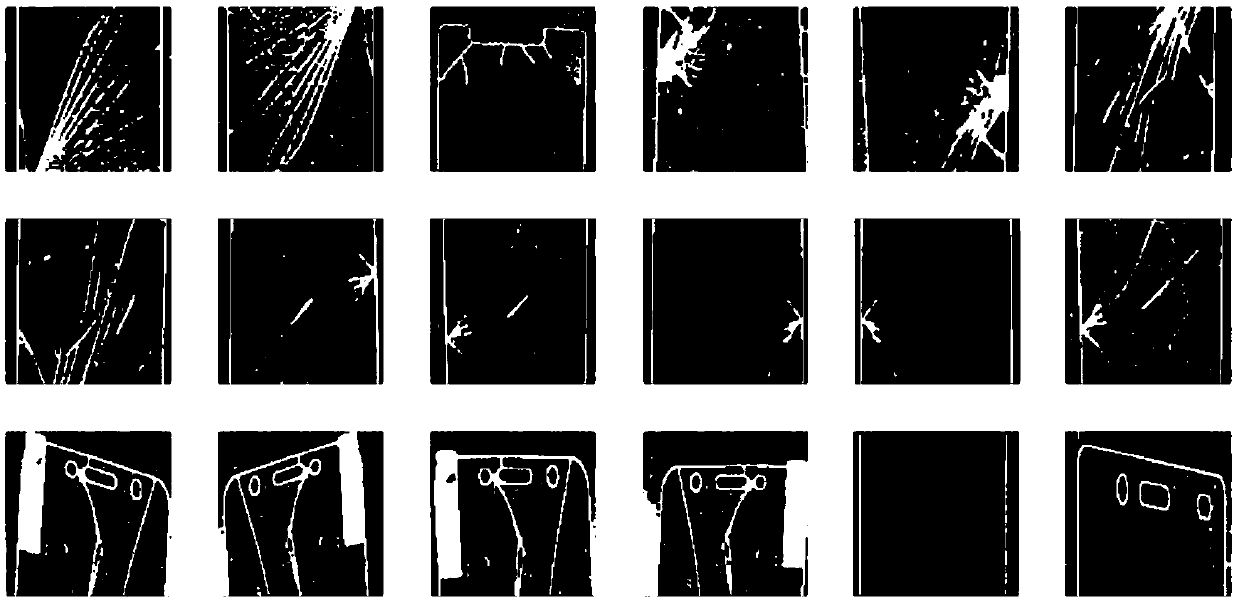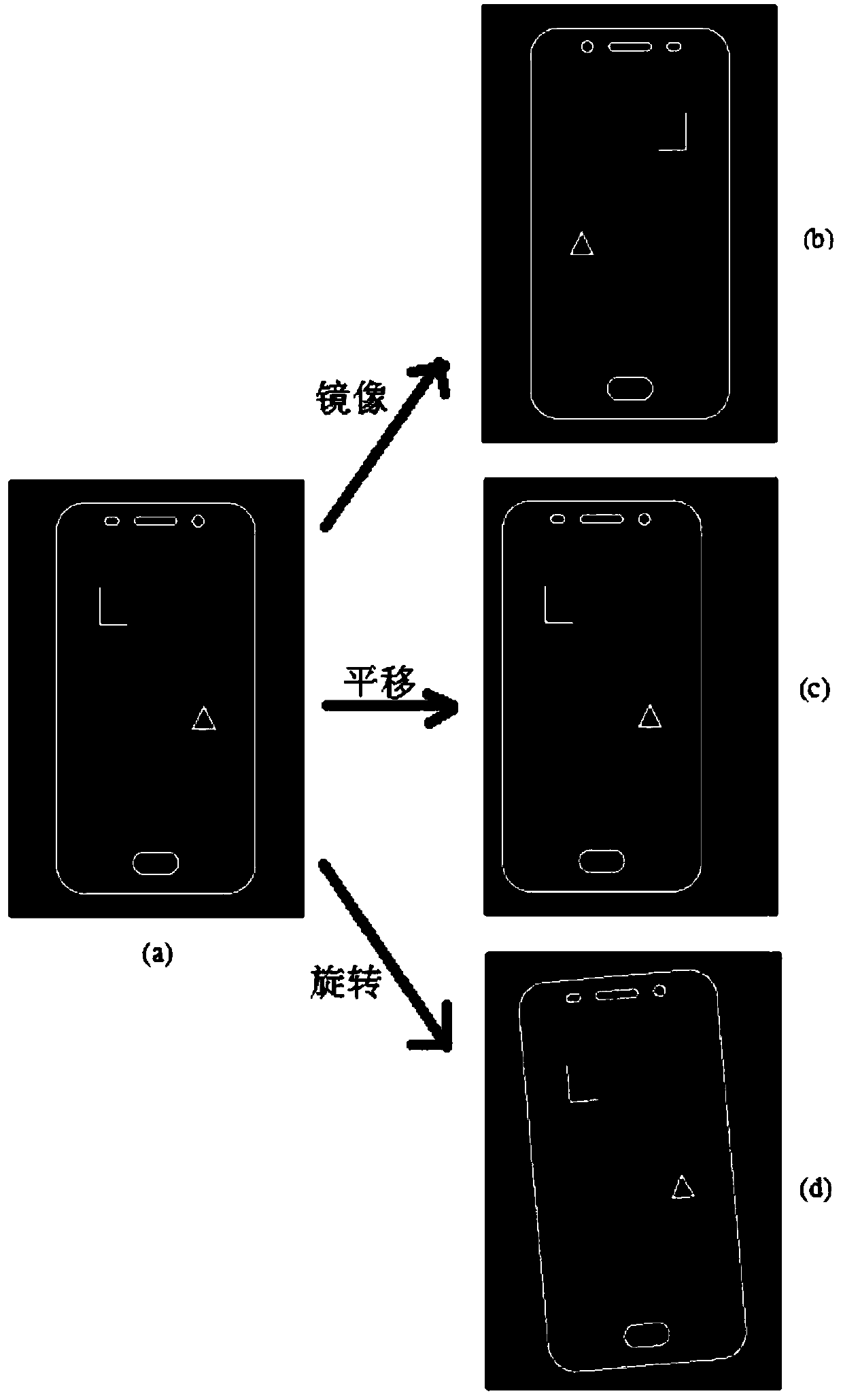Surface defect identification method based on image identification
A defect recognition and image recognition technology, applied in the field of surface defect recognition based on image recognition, can solve problems such as heavy workload, prone to false detection, missed detection, low work efficiency, etc., achieve high accuracy and reduce worker workload , the effect of fast production speed
- Summary
- Abstract
- Description
- Claims
- Application Information
AI Technical Summary
Problems solved by technology
Method used
Image
Examples
specific Embodiment approach 1
[0020] The method for identifying surface defects based on image recognition in this embodiment, the method is implemented through the following steps:
[0021] Step 1. Collect the surface defect image as a sample, and expand the data of the collected surface defect image for the overall image and the detail image, increase the number of samples of the surface defect image, and obtain a complete sample of the surface defect image to improve the classification to be trained The classification effect of the model will be; wherein, the surface defect refers to the variegated points, scratches, defects, dust spots, pits, dirt, and bubbles on the surface of the object, and the surface defect image is a two-dimensional image;
[0022] Step 2, denoising the surface defect image by using the median filter algorithm as the most suitable method for denoising the surface defect image;
[0023] Step 3. Scale the surface defect image after denoising in step 2 by using the nearest neighbor ...
specific Embodiment approach 2
[0027] The difference from the first embodiment is that, in the surface defect recognition method based on image recognition in this embodiment, the overall image and the detail image of the collected surface defect image described in step 1 are data expanded, specifically:
[0028] Defect recognition is based on the feature information of normal and defect samples on the surface of the object for pattern recognition. The small number of training samples means that the feature information of the relevant object surface that can be extracted is reduced. The insufficient number of training samples is the main problem to be solved in pattern recognition. Because the location of appearance defects in the production process of the object surface is random, and the defect rate is low, the number of initial defect image samples is small, so it is necessary to expand the existing defect image samples. In the present invention, the image sample expansion is carried out respectively in t...
specific Embodiment approach 3
[0033]The difference from the specific embodiment 1 or 2 is that in the surface defect recognition method based on image recognition in this embodiment, the median filtering algorithm described in step 2 is used as the most suitable surface defect image denoising method to denoise the surface defect image process, specifically:
[0034] In the actual production line, due to the influence of imaging equipment and external environmental noise, digital images will be disturbed by noise during digitization and transmission. Effective noise reduction technology is required to improve image quality. The present invention compares the denoising effects of different denoising methods on different noises and compares the local processing effects of the original image, and selects the median filter algorithm as the most suitable method for denoising the surface image of the defective object.
[0035] Median filtering is a kind of nonlinear filtering. It is a nonlinear signal processing ...
PUM
 Login to View More
Login to View More Abstract
Description
Claims
Application Information
 Login to View More
Login to View More - R&D
- Intellectual Property
- Life Sciences
- Materials
- Tech Scout
- Unparalleled Data Quality
- Higher Quality Content
- 60% Fewer Hallucinations
Browse by: Latest US Patents, China's latest patents, Technical Efficacy Thesaurus, Application Domain, Technology Topic, Popular Technical Reports.
© 2025 PatSnap. All rights reserved.Legal|Privacy policy|Modern Slavery Act Transparency Statement|Sitemap|About US| Contact US: help@patsnap.com



